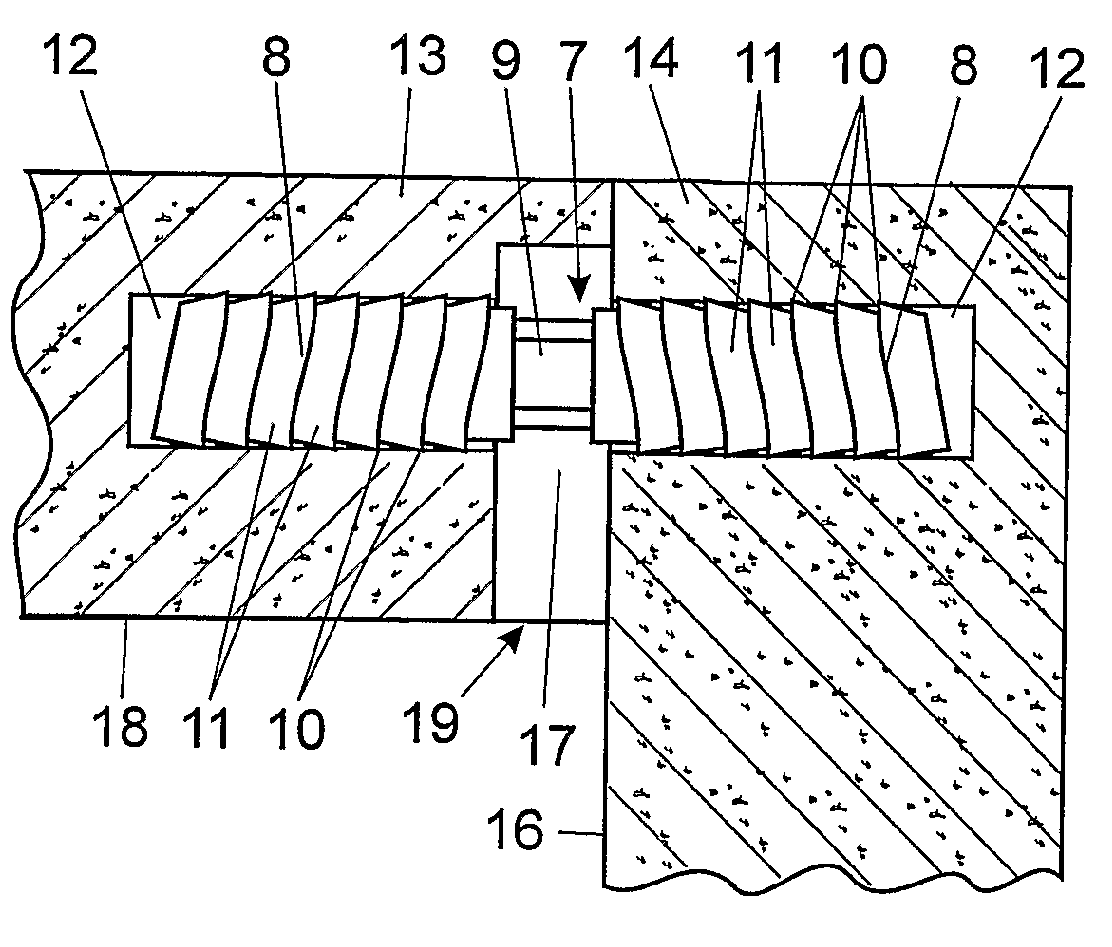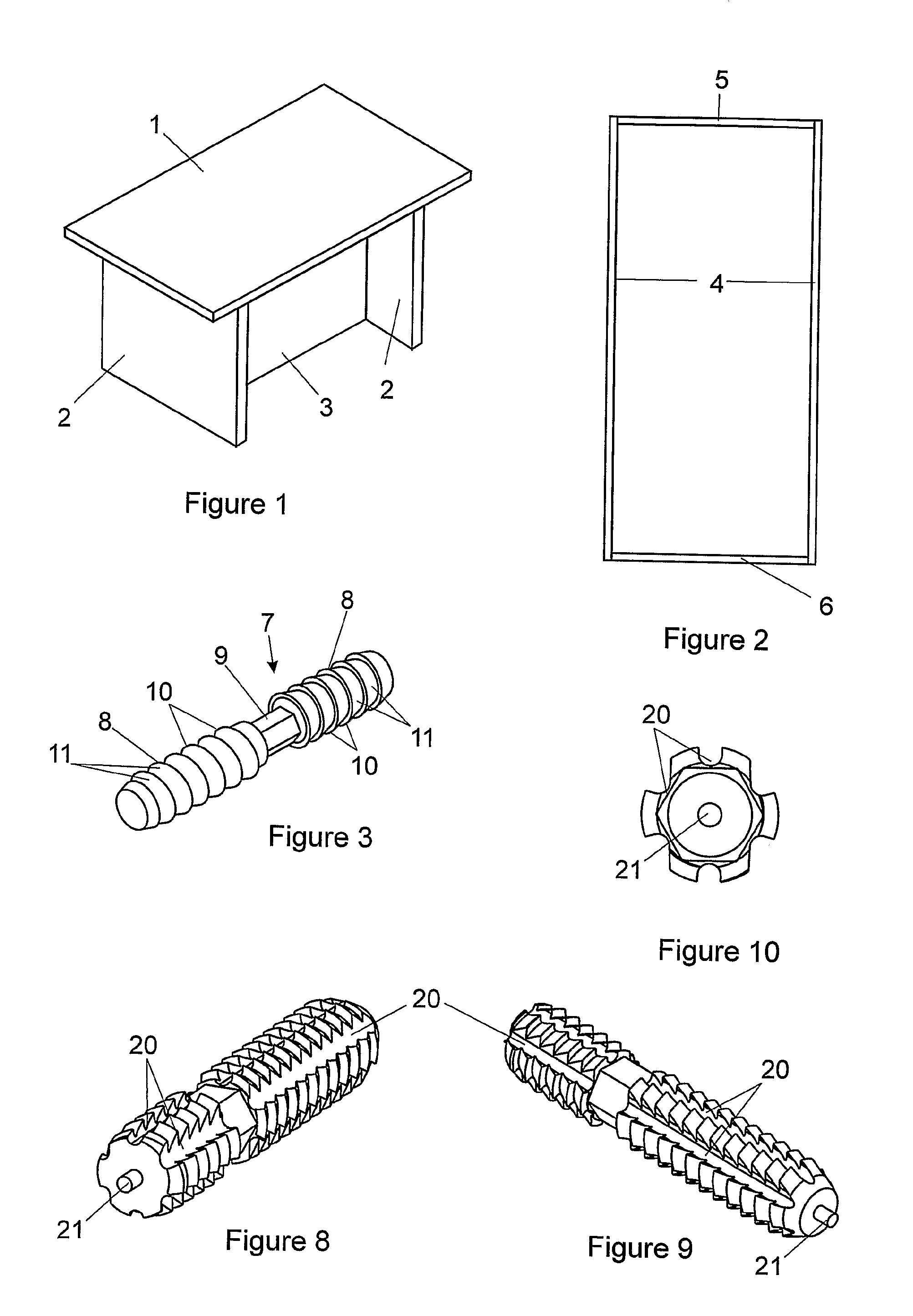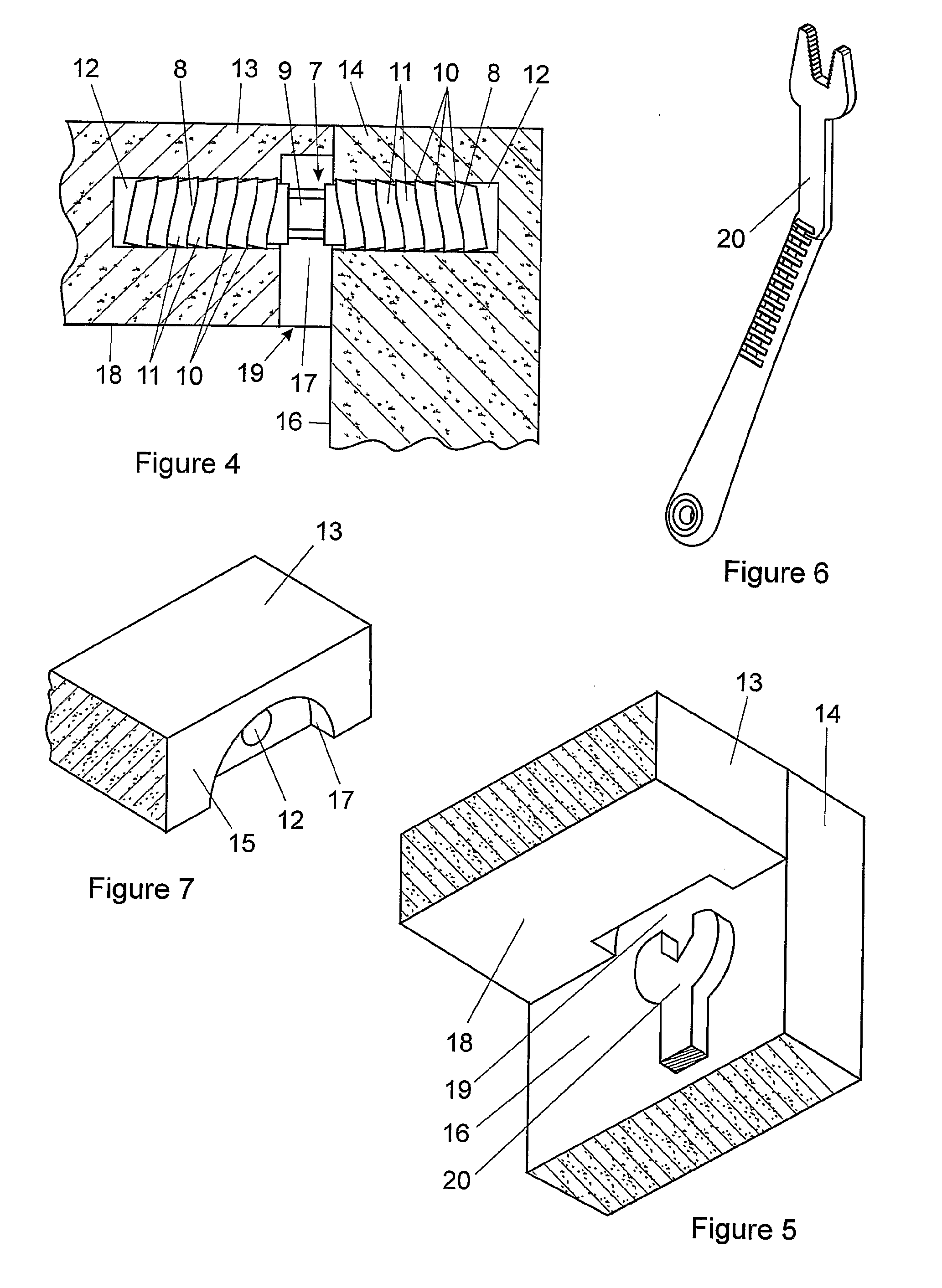Fastener For Connecting Components and Assembling Embodying Same
a technology of connecting components and assembling, applied in the direction of threaded fasteners, rod connections, screws, etc., can solve the problems of reducing the progress of components, reducing the quality of components, so as to achieve the effect of assembly production
- Summary
- Abstract
- Description
- Claims
- Application Information
AI Technical Summary
Benefits of technology
Problems solved by technology
Method used
Image
Examples
Embodiment Construction
[0050]Whilst not being limited to such application, fasteners according to the invention are especially suitable for use in assembling furniture components to form finished articles of furniture. For example, the fasteners of this invention can be employed for securing panels together that typically extend at right angles to each such as a desk top (1) (see FIG. 1) and two leg defining panels (2) as well as for securing a modesty panel (3) to the leg defining panels. The panels could also be, for example, the sidewalls (4) and the top and bottom walls (5) and (6) of a cupboard (see FIG. 2).
[0051]Turning now to a simple embodiment of the invention that is illustrated in FIGS. 3 and 4, a fastener according to the first variation defined above, generally indicated by numeral (7), consists of two coaxial end regions (8) interconnected by a central hexagonal cross-sectioned engagement zone in the form of a hexagonal formation (9). Each of the end regions is injection moulded from a suita...
PUM
 Login to View More
Login to View More Abstract
Description
Claims
Application Information
 Login to View More
Login to View More - R&D
- Intellectual Property
- Life Sciences
- Materials
- Tech Scout
- Unparalleled Data Quality
- Higher Quality Content
- 60% Fewer Hallucinations
Browse by: Latest US Patents, China's latest patents, Technical Efficacy Thesaurus, Application Domain, Technology Topic, Popular Technical Reports.
© 2025 PatSnap. All rights reserved.Legal|Privacy policy|Modern Slavery Act Transparency Statement|Sitemap|About US| Contact US: help@patsnap.com



